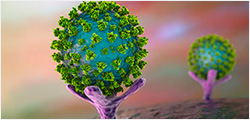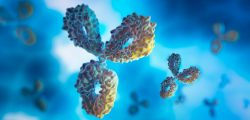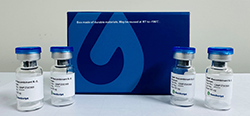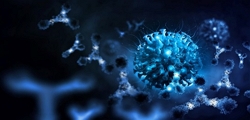| Description |
GenCRISPR™
Ultra NLS-Cas9-basic GMP is utilized for CRISPR gene editing applications. The Cas9
nuclease forms a stable ribonucleoprotein (RNP) complex with the guide RNA
(gRNA) component. With the help of nuclear localization signal (NLS) expressed
with the Cas9 nuclease, the RNP complex enters the nucleus and cleaves the
target gene. When compared with a plasmid-based delivery system, the RNP
delivery system has been observed to increase the on-target gene editing
efficiency and decrease off-target effects.
|
| Selection Guide |
GenScript
provides two types of Cas9 nucleases in basic GMP* for selection based on your
specific downstream applications.| Nuclease | Description |
|---|
| GenCRISPR™ Ultra
NLS-Cas9-basic GMP (Z03623) | Recombinant
Cas9 nuclease (wild type) of Streptococcus
pyogenes; ideal choice for most CRISPR gene editing applications where high
editing efficiency is preferred. | | GenCRISPR™ Ultra
eSpCas9-2NLS-basic GMP (Z03624) | Recombinant
enhanced specificity Cas9 nuclease (mutant) of Streptococcus pyogenes; ideal
for CRISPR gene editing applications which require low off-target effects and robust
on-target cleavage. |
|
sgRNA-dependent
double-stranded DNA cleavage.
|
| Source |
Recombinant Cas9 nuclease (wt) with an
N-terminal NLS expressed in E.coli
|
| Species |
S. pyogenes
|
| Tag |
Tag-free
|
| Theoretical Molecular Weight |
160 kDa
|
| Concentration |
10
mg/mL
|
| Active temperature |
Optimal at 37 °C.
|
| Storage Buffer |
25 mM Tris-HCl, 300 mM NaCl, 0.1 mM EDTA, 50%
Glycerol pH 8.0.
|
| Storage & Stability |
Store
at -20 °C for up to 12 months from the date of
manufacture.
Avoid repeated freeze-thaw cycles. Do not store below -20 °C!
|
| Appearance |
Clear, colorless, liquid
|
| Purity |
≥ 95% as analyzed by SDS-PAGE
≥ 95% as analyzed by SEC-HPLC
|
| Concentration by A280 |
10 mg/ml ± 1 mg/ml
|
| Bioactivity (in vitro) |
≥ 90%
|
| Residual DNase |
≤ 10 ng/mg
|
| Residual RNase |
≤ 1 ng/mg
|
| Endotoxin Level |
≤ 10 EU/mg
|
| Residual HCP |
≤ 10 ng/mg
|
| Residual HCD |
≤ 1 ng/mg
|
| Bioburden |
< 1 CFU/ml
|
| Mycoplasma |
< LOD
|

Figure 1: TRAC and PD-1 knock-out efficiency in human primary T cells.
Human primary T cells were cultured for the test. The cells were transfected with GenCRISPR™ Ultra NLS-SpCas9-basic GMP (Z03623) or GenCRISPR™ Ultra eSpCas9-2NLS-basic GMP (Z03624) or wild type Cas9, and sgRNA (synthesized by GenScript CRISPR Synthetic sgRNA Services ) for human TRAC and PD-1 gene knock-out by electroporation. After transfection and cell culture, the TRAC knock-out efficiency was measured by FACS while PD-1 knock-out efficiency was measured by Sanger sequencing. Both GenScript Ultra SpCas9 and eSpCas9 show high editing efficiency.
Note: This experiment used the following:
Cas9: sgRNA (molar ratio) =1:2
RNP amount: ~ 25 pmol
Cell number: 1.0 × 106 cells

Figure 4: Gene knock-in efficiency at TRAC site in primary T cells.
The cells were transfected with GenCRISPR™ Ultra NLS-SpCas9-basic GMP (Z03623) or GenCRISPR™ Ultra eSpCas9-2NLS-basic GMP (Z03624), sgRNA (synthesized by GenScript CRISPR Synthetic sgRNA Services) and dsDNA HDR template (synthesized by GenScript Double-strand DNA Synthesis Services) for gene knock-in at TRAC site in primary T cells by electroporation. After transfection and cell culture, the gene knock-in efficiency was analyzed by FACS. Both GenScript GenCRISPR™ Ultra NLS-SpCas9-basic GMP (Z03623) and GenCRISPR™ Ultra eSpCas9-2NLS-basic GMP (Z03624) show high gene knock-in efficiency.
Note: This experiment used the following:
SpCas9/eSpCas9: sgRNA (molar ratio) =1:2
RNP amount: ~ 25 pmol
Cell number: 1.0 × 106 cells

Figure 3: RAB11A knock-out efficiency in 293T cells.
Human 293T cells were cultured for the test. The cells were transfected with GenCRISPR™ Ultra NLS-SpCas9-basic GMP (Z03623) or wild type Cas9 proteins from competitors and sgRNA (synthesized by GenScript CRISPR Synthetic sgRNA Services) for human RAB11A gene knock-out by electroporation. After transfection and cell culture, the gene editing efficiency was analyzed by Sanger sequencing. GenScript GenCRISPR™ Ultra NLS-SpCas9-basic GMP (Z03623) shows higher editing efficiency.
Note: This experiment used the following:
SpCas9: sgRNA (molar ratio) =1:3
RNP amount: 7.5 pmol
Cell number: 2.0 × 105 cells

Figure 2: CD96 and NKG2A knock-out efficiency in NK92 cells.
Human NK92 cells were cultured for the test. The cells were transfected with GenCRISPR™ Ultra NLS-SpCas9-basic GMP (Z03623) and sgRNA (synthesized by GenScript CRISPR Synthetic sgRNA Services) for human CD96 or NKG2A gene knock-out by electroporation. After transfection and cell culture, the gene editing efficiency were analyzed by Sanger sequencing. GenScript GenCRISPR™ Ultra NLS-SpCas9-basic GMP (Z03623) shows high editing efficiency.
Note: This experiment used the following:
SpCas9: sgRNA (molar ratio) = 1:1.2
RNP amount: 80 pmol
Cell number: 4.0 × 105 cells
| References |
1. Jinek, Martin, et al. "A programmable dual-RNA–guided
DNA endonuclease in adaptive bacterial immunity." science 337.6096
(2012): 816-821.
2. Chen, Sean, et al. "Highly efficient mouse genome
editing by CRISPR ribonucleoprotein electroporation of zygotes." Journal
of Biological Chemistry 291.28 (2016): 14457-14467.
3. Larson, Matthew H., et al. "CRISPR interference
(CRISPRi) for sequence-specific control of gene expression." Nature
protocols 8.11 (2013): 2180-2196.
4. Ran, F. Ann, et al. "Genome engineering using the
CRISPR-Cas9 system." Nature protocols 8.11 (2013):
2281-2308.
5. Kim, Sojung, et al. "Highly efficient RNA-guided genome
editing in human cells via delivery of purified Cas9
ribonucleoproteins." Genome research 24.6 (2014):
1012-1019. |
| Annotation |
*basic GMP is a branding term that GenScript uses to
describe reagents manufactured in compliance with ISO 9001 and ISO 13485
quality management system standards and with more stringent process controls
and relatively complete documentation records. GenScript is capable of
providing documents, site audit and other support to help with the
applications of your projects in specific regions.
|
For research or manufacturing
use. Not intended for clinical use. Direct human use, including taking orally
and injection are forbidden.



































